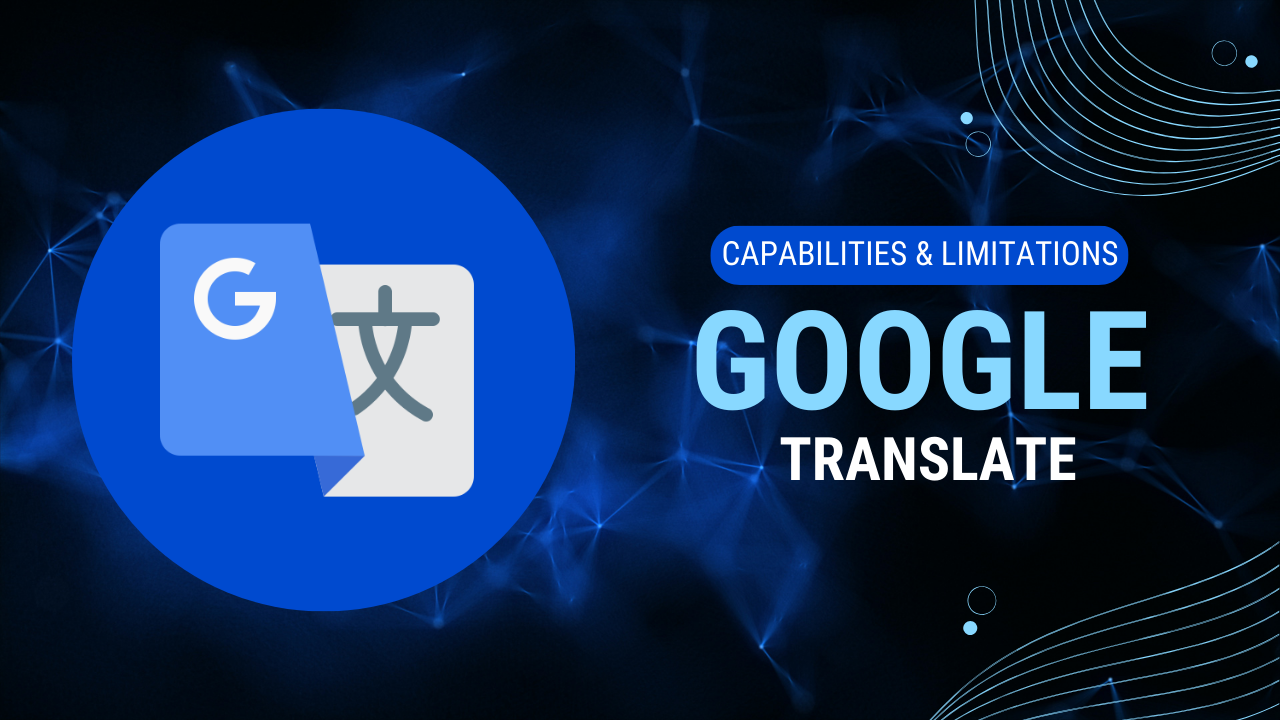Introduction
In today’s interconnected world, language barriers pose significant challenges for communication and understanding. Fortunately, advancements in artificial intelligence (AI) have led to the development of machine translation tools like Google Translate. Google Translate is a widely used program that aims to bridge the gap between different languages, allowing users to quickly convert text from one language to another. However, despite its popularity, there are important limitations and concerns regarding the effectiveness and accuracy of Google Translate.
In this article, we will delve into the shallowness of Google Translate and examine its capabilities and shortcomings. We will explore the underlying AI techniques it employs, evaluate its performance through various tests, and discuss the implications of relying too heavily on machine translation. Through a comprehensive analysis, we aim to shed light on the importance of human translators and the inherent limitations of automated language conversion tools.
The Evolution of Machine Translation
Machine translation has a long history, with early attempts dating back to the mid-20th century. Over the years, researchers have explored different approaches, from rule-based systems to statistical methods. More recently, the introduction of deep neural networks has revolutionized machine translation, leading to the development of more advanced translation engines.
Google Translate, powered by deep neural networks, has garnered significant attention for its promise of improved translation quality. With access to a vast database of multilingual text, Google Translate aims to provide accurate and natural translations between different languages. However, despite its impressive capabilities, it falls short in terms of achieving true understanding and context.
The Pitfalls of Literal Translation
One of the fundamental issues with Google Translate is its tendency to rely on literal translation rather than understanding the underlying meaning of the text. While the program may be able to accurately translate individual words or phrases, it often fails to capture the nuances and subtleties of language. This can result in awkward and nonsensical translations, especially when dealing with idiomatic expressions or culturally specific terms.
For instance, when translating the English phrase “kill two birds with one stone” into French, Google Translate provides the literal translation “tuer deux oiseaux avec une pierre.” While this translation conveys the basic idea, it lacks the idiomatic nature of the original expression. A human translator would be able to recognize the figurative meaning and provide a more accurate and natural translation.
The Challenge of Context and Ambiguity
Understanding the context in which a word or phrase is used is crucial for accurate translation. However, Google Translate often struggles with context and fails to capture the intended meaning. This is particularly evident in languages with grammatical gender, where the choice of pronouns and adjectives depends on the gender of the noun being described.
For example, in the French language, the word “amour” can be translated as both “love” and “friendship” in English. Without proper context, Google Translate may choose the wrong translation, leading to confusion and miscommunication. Human translators, on the other hand, can rely on their understanding of the broader context to accurately capture the intended meaning.
The Limits of Cultural Understanding
Language and culture are deeply intertwined, and a thorough understanding of cultural nuances is essential for accurate translation. However, Google Translate often falls short in this regard, as it lacks the ability to grasp the cultural implications and connotations of words and phrases.
For instance, consider the Japanese concept of “omotenashi,” which embodies the spirit of hospitality and impeccable service. While Google Translate may provide a literal translation of “omotenashi” as “hospitality,” it fails to convey the deep cultural significance and unique aspects of this concept. Human translators, with their cultural knowledge and sensitivity, can provide a more nuanced and accurate translation that captures the essence of “omotenashi.”
The Importance of Creative Expression
Translation is not merely a mechanical process of converting words from one language to another; it is an art form that requires creativity and adaptability. Human translators possess the ability to capture the author’s style, tone, and intent, ensuring that the translated text reads naturally and conveys the same impact as the original.
Unfortunately, Google Translate lacks the finesse and creativity of a human translator. It cannot reproduce the author’s unique voice or account for the subtle nuances of literary works. As a result, translations produced by Google Translate often lack the depth and richness of human-crafted translations.
The Role of Human Translators
While Google Translate undoubtedly provides a convenient and accessible tool for basic translation needs, it cannot fully replace the expertise and creativity of human translators. Human translators bring a wealth of knowledge, experience, and cultural understanding to the table, allowing them to produce translations that are accurate, nuanced, and culturally sensitive.
Moreover, human translators excel in capturing the essence and intent of the original text, going beyond literal translation to convey the author’s intended meaning. They can adapt their translations to different contexts, target audiences, and cultural sensitivities, ensuring that the translated text resonates with readers in the target language.
The Future of Machine Translation
Despite its current limitations, machine translation continues to evolve, driven by advancements in AI and natural language processing. Researchers are exploring new techniques, such as neural machine translation and reinforcement learning, to improve the accuracy and effectiveness of automated translation tools.
However, it is important to recognize that even the most advanced machine translation systems cannot replace the irreplaceable human touch. While they may offer convenience and speed, they lack the depth of understanding, cultural sensitivity, and creative expression that human translators bring to the table.
Conclusion
Google Translate has undoubtedly made significant strides in the field of machine translation, leveraging AI techniques to provide accessible and convenient translation services. However, it is essential to recognize its limitations and the inherent shallowness of its understanding.
As we have explored in this article, Google Translate falls short in capturing the nuances of language, context, and cultural understanding. It struggles with idiomatic expressions, context-dependent translations, and maintaining the creative essence of the original text. These limitations underscore the importance of human translators, whose expertise, cultural knowledge, and creative flair are indispensable for accurate and meaningful translations.
While machine translation tools like Google Translate have their place in facilitating basic communication, they should not be relied upon for complex or sensitive translations. The art of translation remains firmly rooted in the domain of human expertise, and the human touch will continue to be essential for bridging language barriers and fostering true understanding between cultures.














